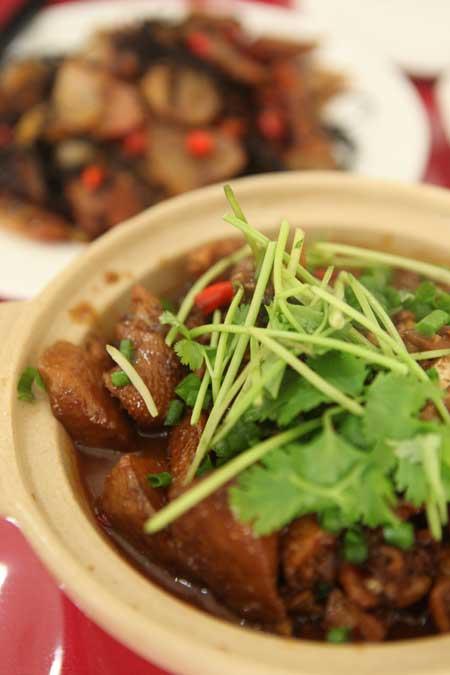 |
| Chicken stew with taro. (Photo: Global Times) |
BEIJING, May 10 -- Li Jiaxiu opened her Beichuan Qiangzu Restaurant near Zuo'anmenqiao, Fengtai district, last month to a lot of media attention - but this was less to do with her decision to serve Qiang ethnic cuisine and more connected with her daughter, famously injured ballerina Li Yue, who lost a leg in the 2008 Wenchuan earthquake.
Many came out of curiosity, such middle-aged Gao and his friends decided to check it out after reading about the opening. They chatted with the waitress about Li Yue's progress before tucking into what Gao said pretty much tasted like Sichuan cuisine. It's true; Qiang cooking is also hot and spicy, and full of red peppers.
The place isn't fancy and prices are kept low. About 10 tables with three Qiang waitresses in pink ethnic costumes (their chef is ethnically Qiang as well) managed to cope well with the lunch rush, as diners ordered from a menu full of Qiang essentials like wild mountain vegetables and smoked pork slices.
Lifestyle ordered chicken stew with taro (26 yuan), Chinese hickory flowers with sliced smoked pork stir-fry (18 yuan), and a bit of cold green bean jelly starch (14 yuan), seasoned with a special sauce of soy paste, green pepper, garlic and red pepper paste. Li said that, except for the chicken and cold jelly, all ingredients were from the family's hometown.
Chinese hickory flowers grow in the mountains and are rarely seen in regular Chinese dishes, but they're very popular among the Qiang people. "If you miss the 10 days of best picking time, then they cannot be used anymore, similar to wild bracken and spring bamboo shoots. Our people live on these vegetables," Li said. The fresh green carya cathayensis flowers are dried in sunshine until black, ready for cooking.
The hickory flower and smoked pork stir-fry was our favorite dish. The flavor of these long, thin, strand-like flowers was similar to that of black fungus with the slight bitterness of medicinal herbs like caterpillar fungus. The pork was bought from local Qiang peasants who still make it according to traditional methods of prolonged preserving and smoking. The pigs involved were all corn-fed and naturally bred, according to Li.
Corn is a Qiang people staple food, normally served steamed together with rice, though here they only offer plain rice. Steamed pork with rice is a must-have during wedding banquets, but Li regretted she did not have a traditional wooden steamer in her small kitchen. "After we move to a better location, I will upgrade," Li promised, seemingly hopeful for her restaurant's future in spite of its current less-than-ideal location.
(Source: Global Times)





